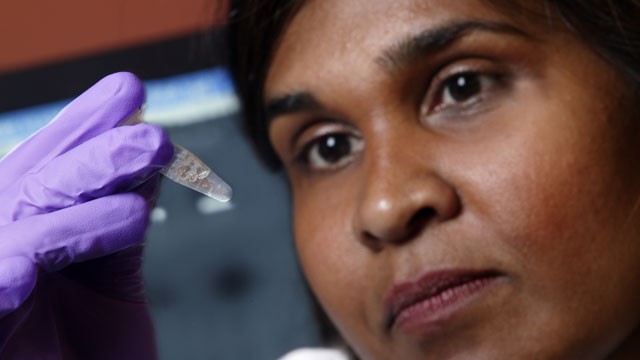

The French researchers followed patients who'd undergone treatment with antiretroviral drugs soon after they'd become infected with HIV. They'd stayed on the medications for several years but then stopped taking the antiretrovirals. That was "fashionable at the time," said Christine Rouzioux, a professor at Necker Hospital and University of Paris Descartes. They are all now in what Rouzioux calls "HIV remission," because the virus has not worsened and they have not shown symptoms for years.
"I know that the U.S. term is 'functional cure,'" Rouzioux told ABCNews.com. "In France, we speak about 'remission.' … The patient controls the virus, but they still have the virus."
The study, which was published Friday in the journal PLOS Pathogens, may show that the baby was not the first documented case of someone "functionally cured" of HIV as researchers announced earlier this month.
Rouzioux and PLOS representatives told ABCNews.com that they did not rush their study into publication when the case of the Mississippi baby was announced.
Dr. Deborah Persaud, who works at Johns Hopkins Children's Center and studied the Mississippi baby, said there were similarities between the 14 French patients and the baby, but the baby had even lower HIV levels than the French patients.
While Rouzioux and Asier Sáez-Cirión, a senior HIV researcher at the Pasteur Institute in Paris, reported about 100 copies of HIV DNA or RNA per 1 million cells in their patients, Persaud said she found less than five copies of HIV DNA or RNA per 1 million cells in the Mississippi baby.
"I'm not sure anybody knows what that means," said Dr. Mark Kline, a pediatric HIV and AIDS specialist at Baylor College of Medicine in Houston. "I don't know that someone with five is necessarily going to be better off in the long term than someone with 100."
Kline said he, too, has had patients who were technically HIV-positive but have had no need for antiretroviral medication. He has also heard of patients who started antiretroviral therapy and could stop without experiencing worsening symptoms.
"This phenomenon that they're describing has been appreciated and known," Kline said. "I think there's a good rational for saying if you can identify these people and do treatment earlier, you can decrease the viral burden and decrease the reservoirs of infected cells in the body and probably alter the long-term course."
But it can take anywhere from a few weeks to a few years for a person to show HIV symptoms from the time that person was infected. As such, early treatment isn't always an option, Kline said.
Rouzioux's patients all experienced symptoms very early, which is why they were able to get swift antiretroviral treatment, she said. Rouzioux and her colleagues followed their patients for about 11 years, she said.
Although these types of patients have been written about before, Kline said this particular study was important because it identified which patients had a genetic predisposition that allowed them to naturally keep HIV at bay and which did not, and therefore went into remission because of treatment.

No comments:
Post a Comment